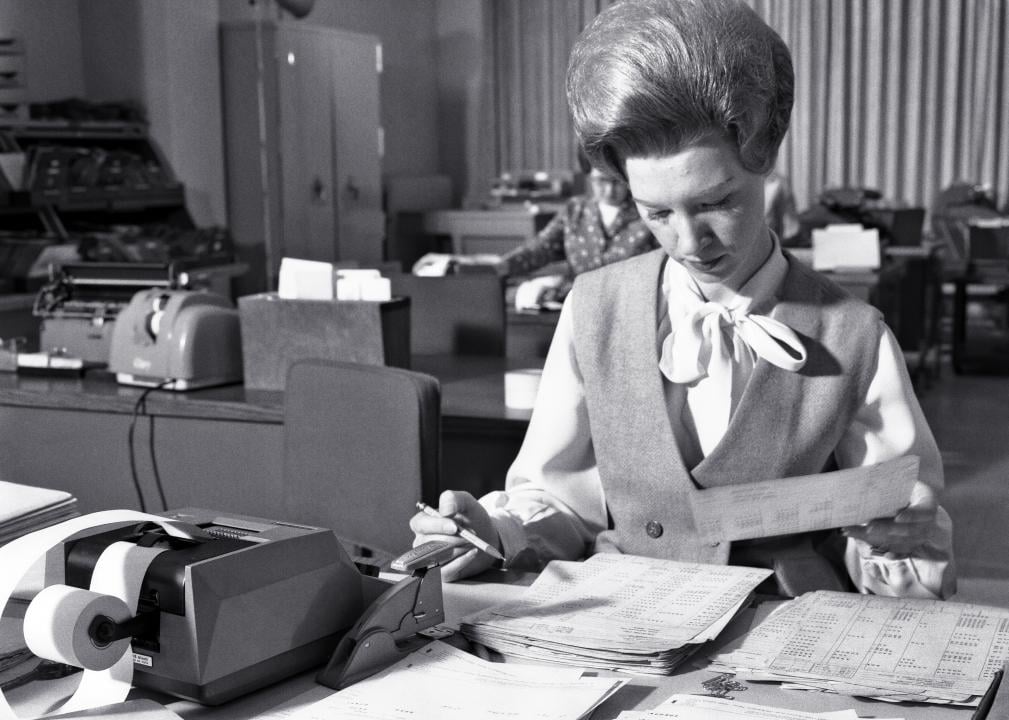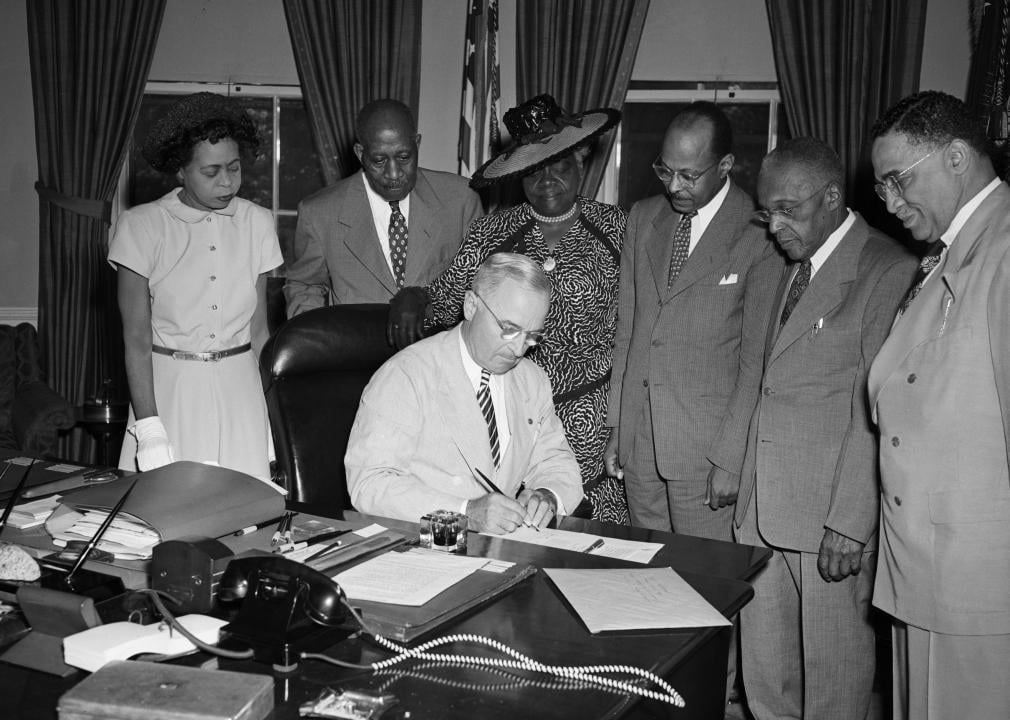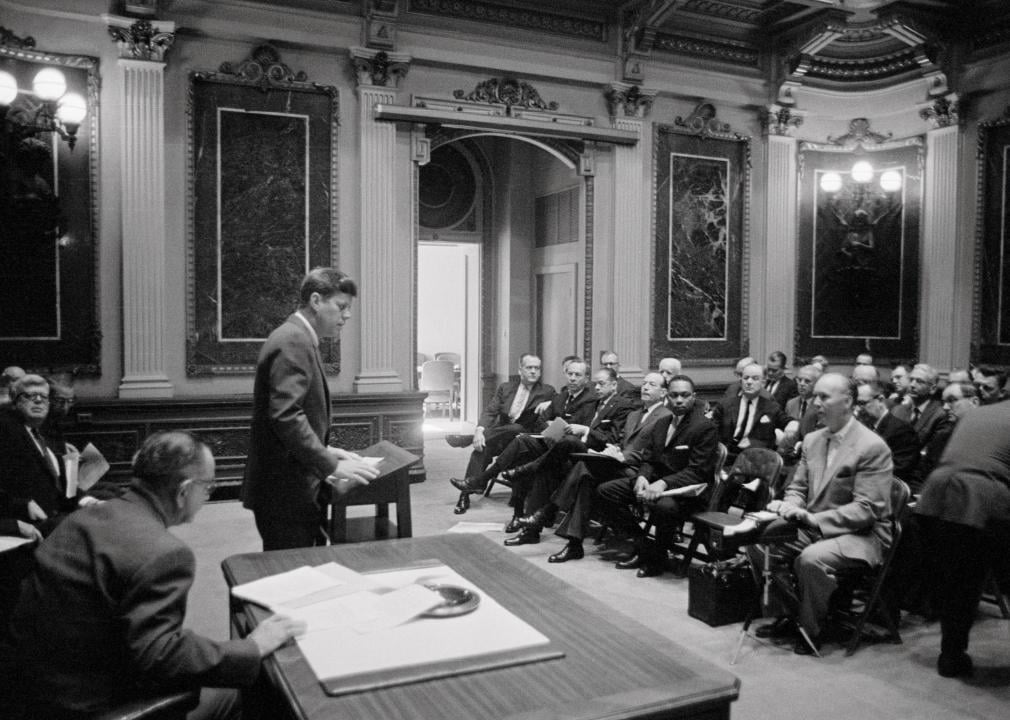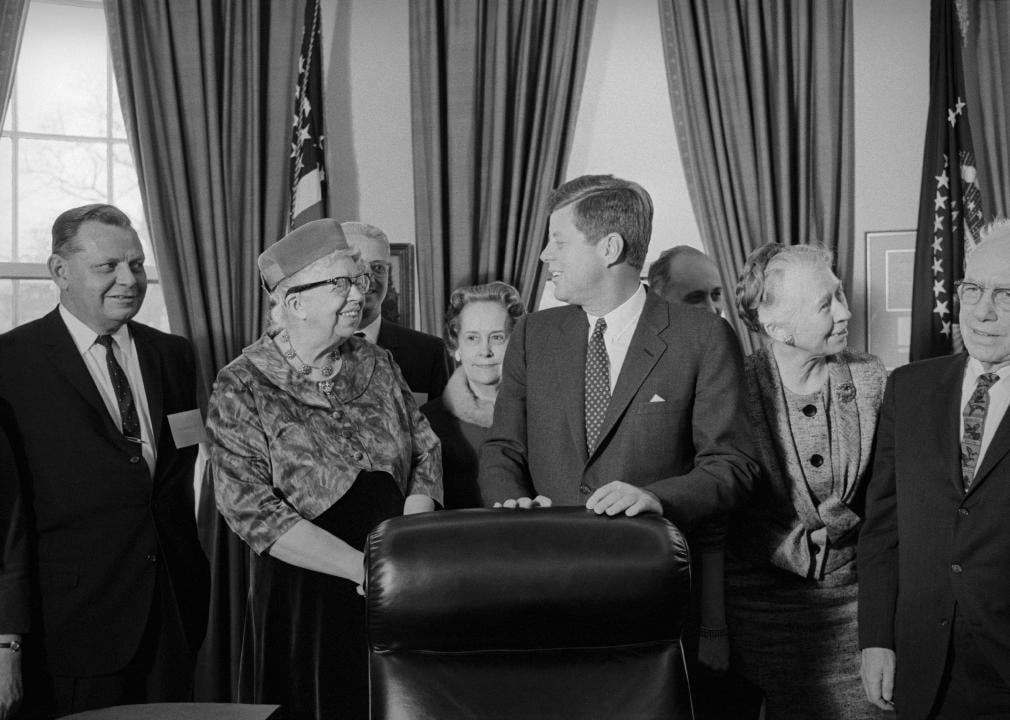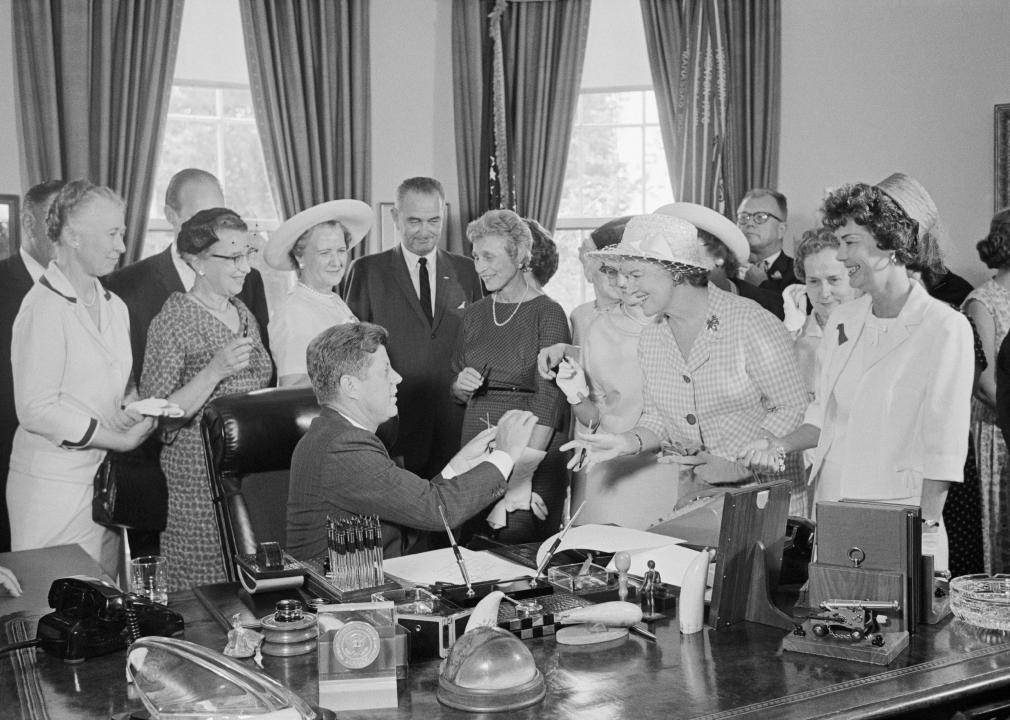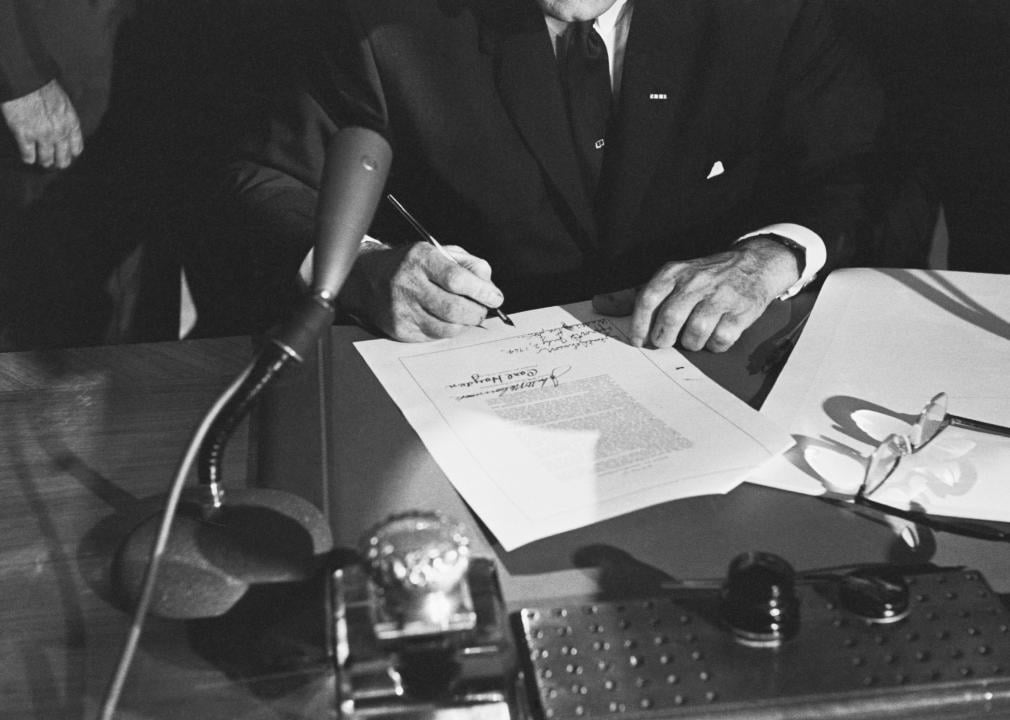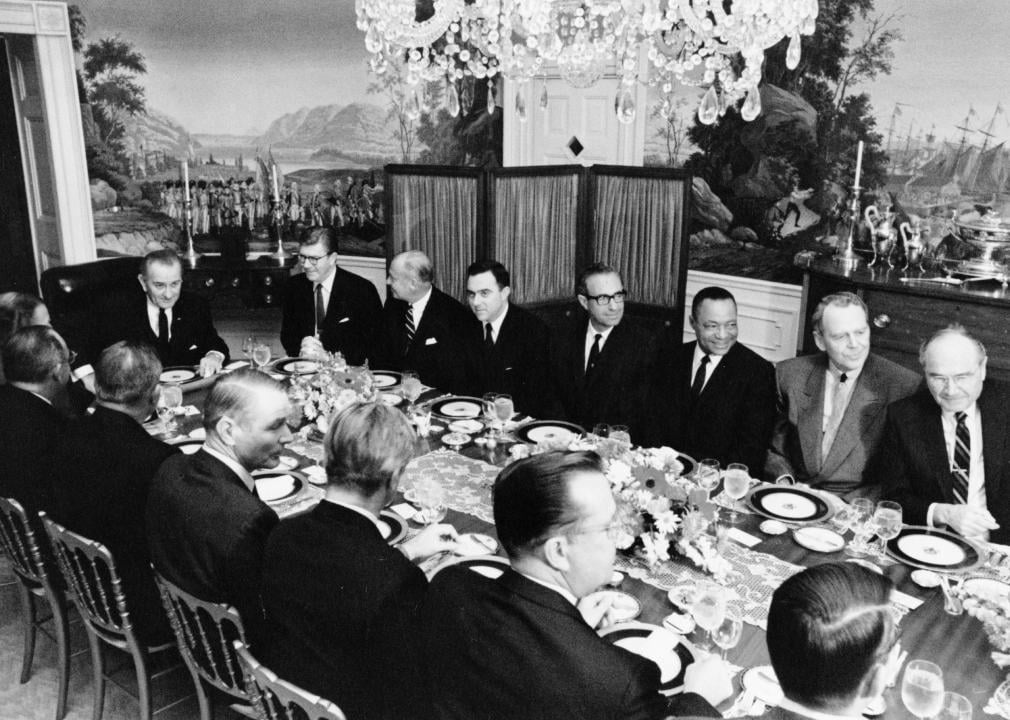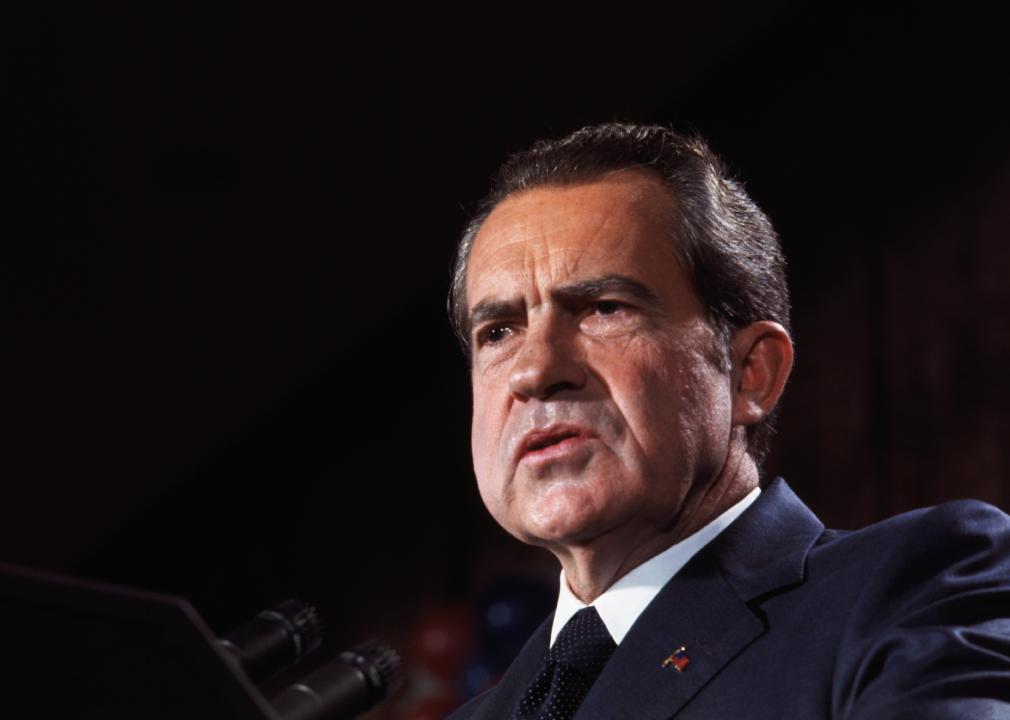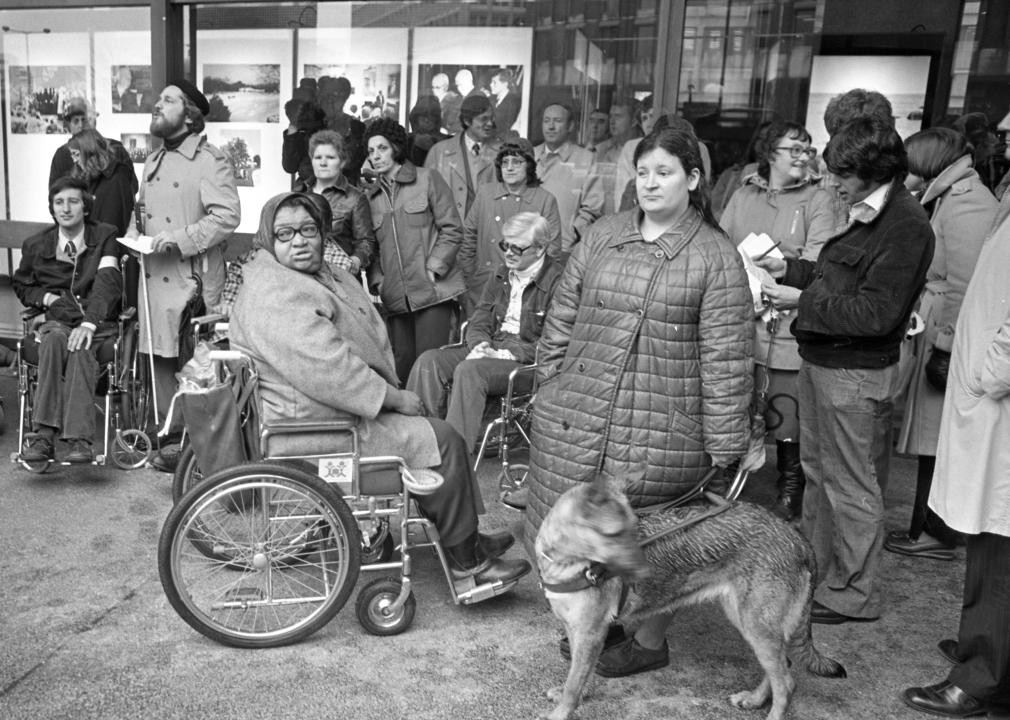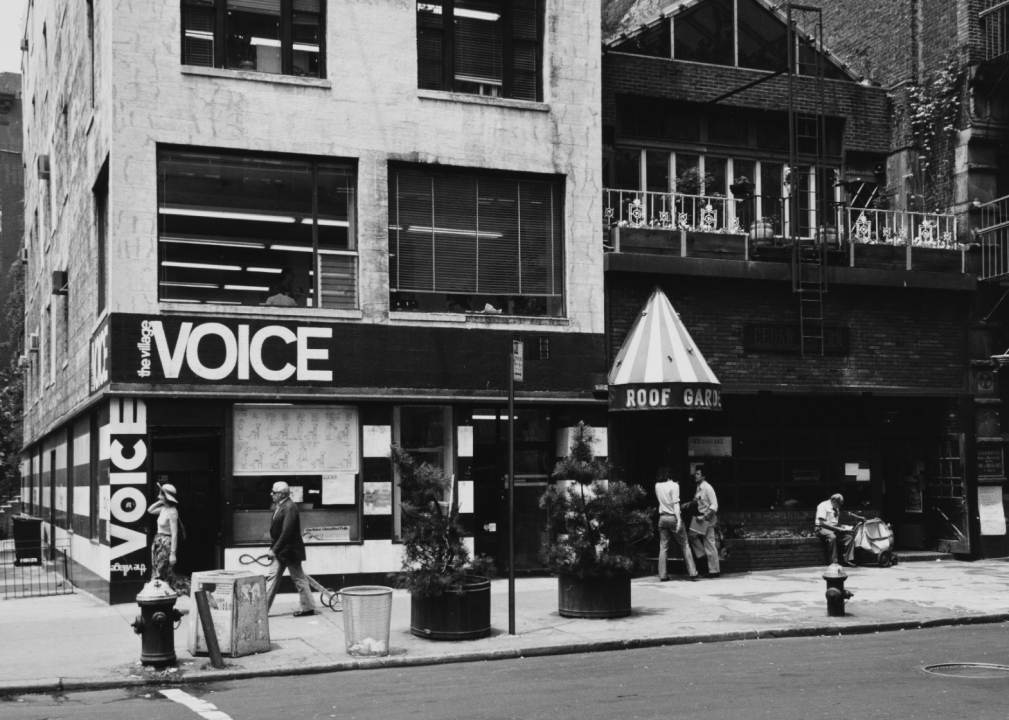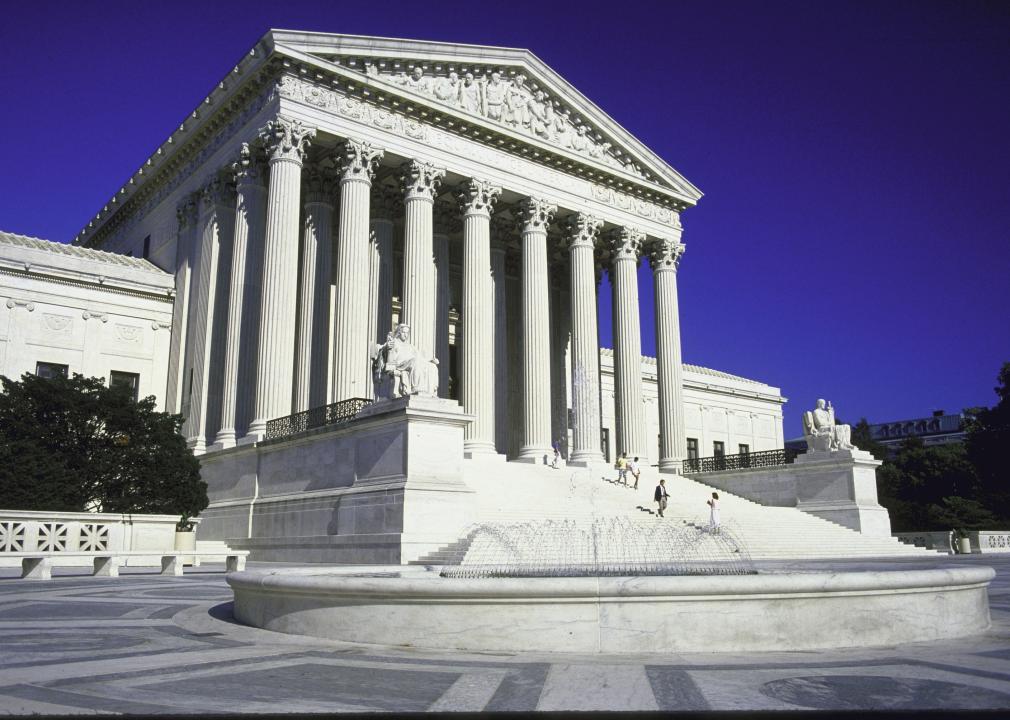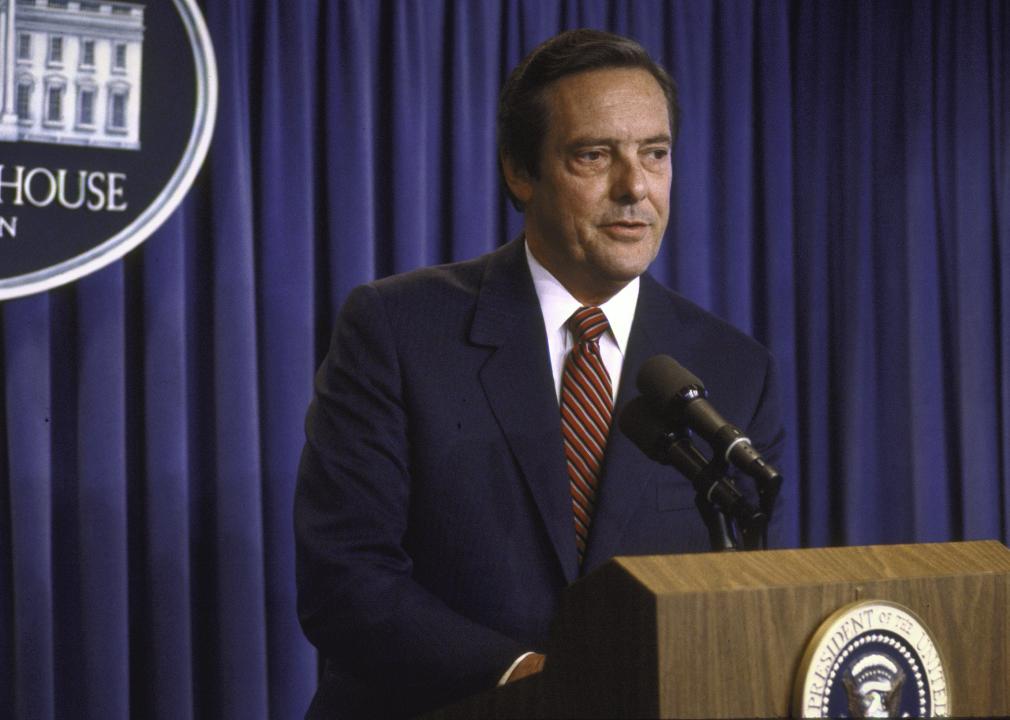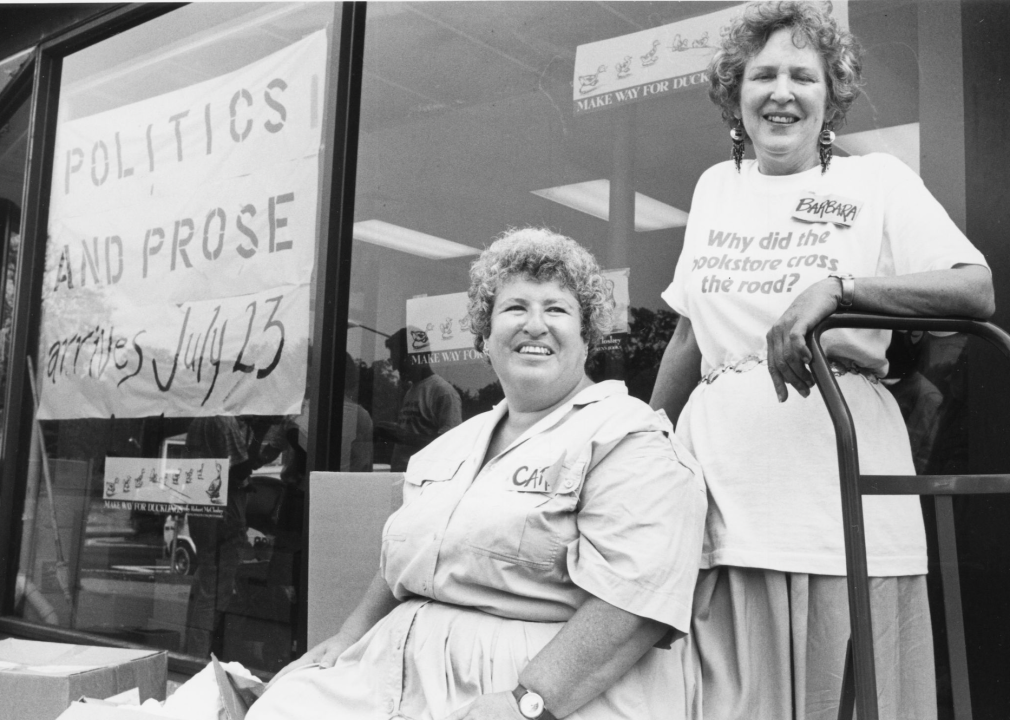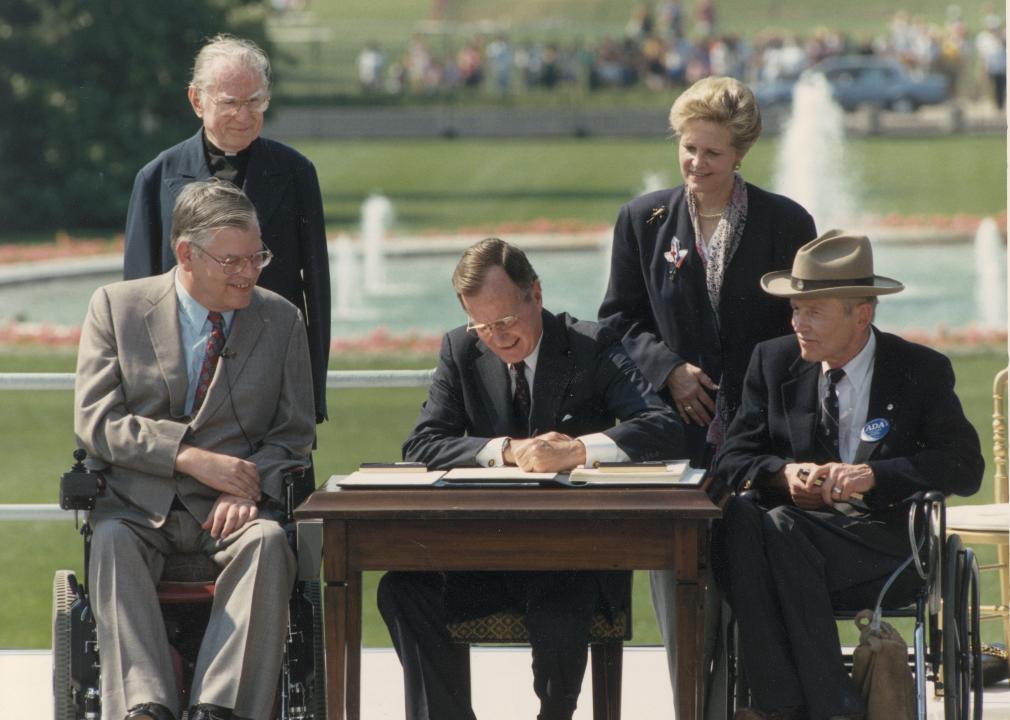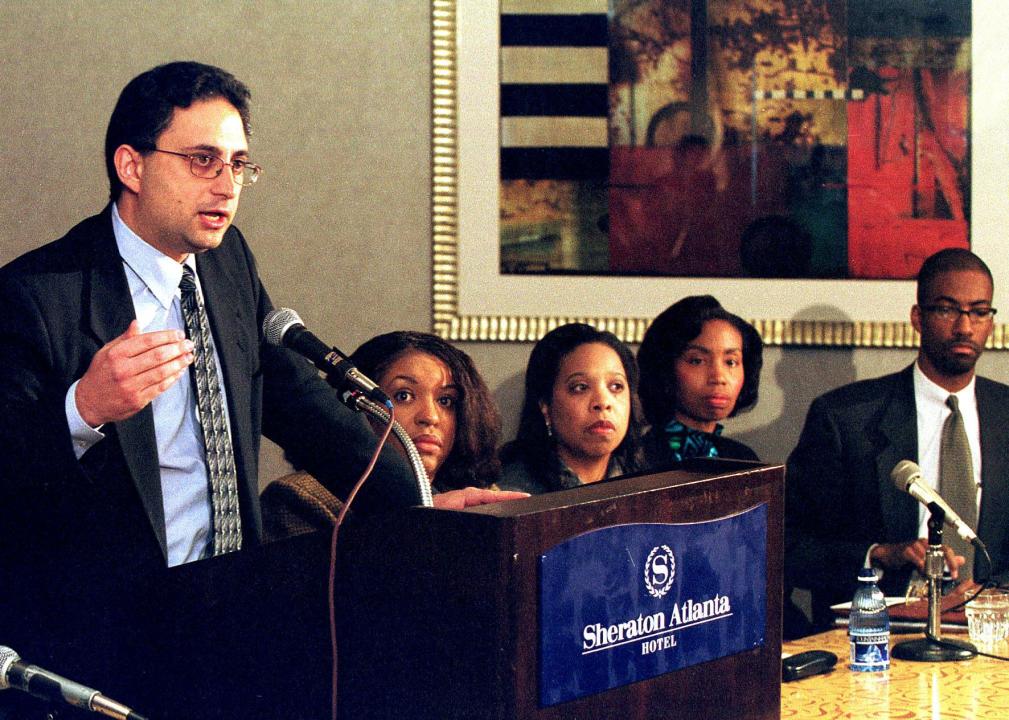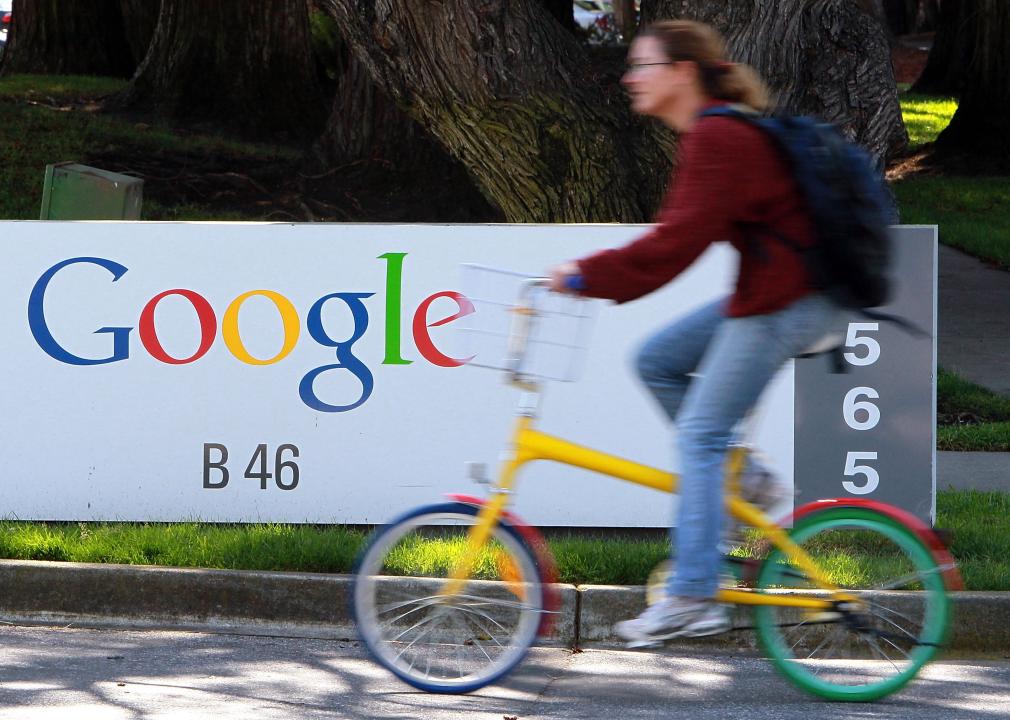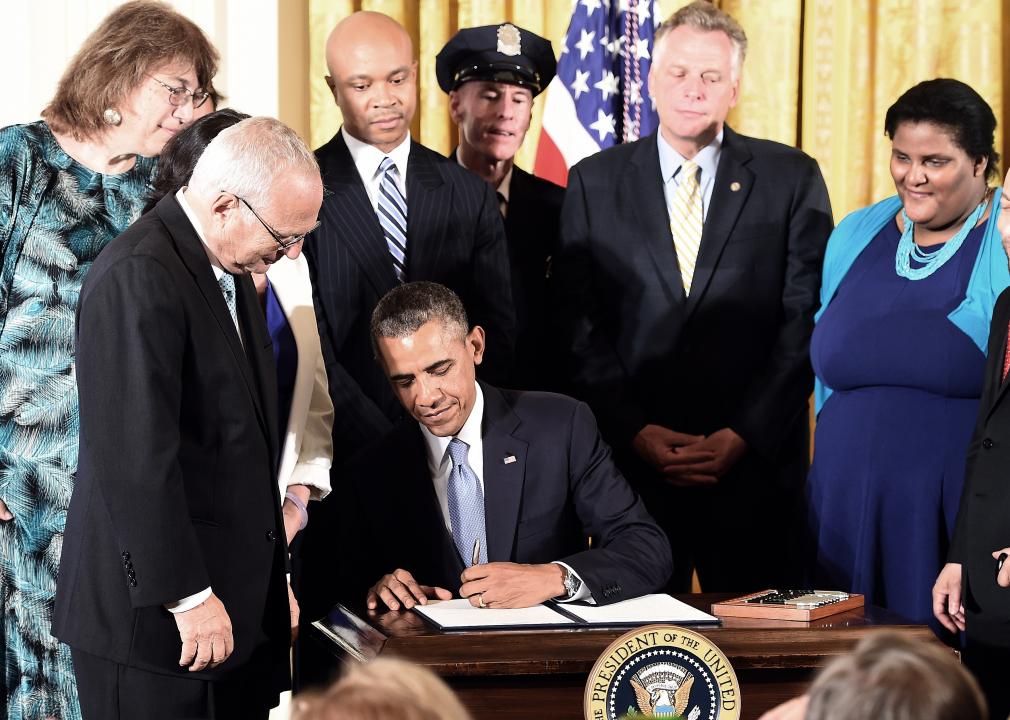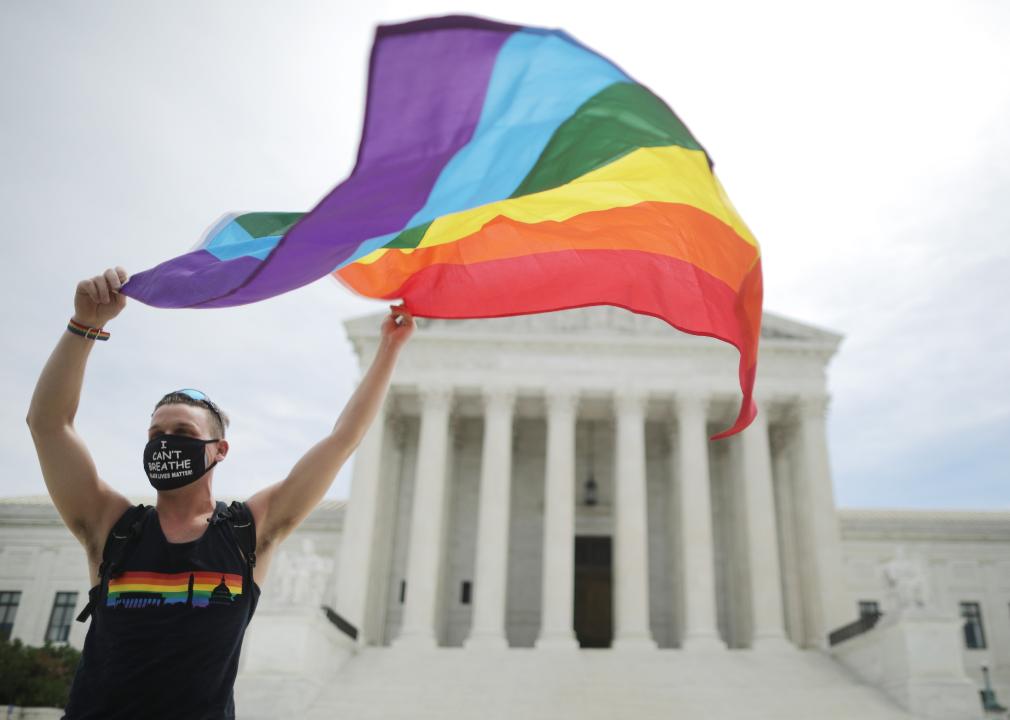History of diversity and inclusion policies in the workplace
H. Armstrong Roberts/ClassicStock // Getty Images
History of diversity and inclusion policies in the workplace
1960s female office worker working at desk
FPG // Getty Images
1920: Congress establishes the Women’s Bureau of the Department of Labor
Women postal workers at a sorting office, circa 1920
Bettmann// Getty Images
1948: President Truman orders desegregation of the armed forces
President Harry Truman signs a proclamation
Bettmann// Getty Images
1961: President John F. Kennedy pushes for “affirmative action” in federal services
President Kennedy speaks to the Equal Employment Opportunity Committee
Bettmann// Getty Images
1961: JFK establishes President’s Commission on the Status of Women
President Kennedy meets with the commission which he appointed to examine the status of women
Bettmann// Getty Images
1963: The Equal Pay Act becomes law
President Kennedy hands out pens during a ceremony
Bettmann// Getty Images
1964: Discrimination based on race, color, religion, sex, and national origin is prohibited
The hands of President Johnson rest on the signed Civil Rights bill
Bettmann// Getty Images
1965: President Johnson signs order for equal opportunity employment in federal services
President Lyndon Johnson hosts a dinner meeting in the White House
Boston Globe // Getty Images
1967: Discrimination against workers over the age of 40 is prohibited
Employees work in an office inside the John F. Kennedy Federal Building
Bettmann// Getty Images
1972: Equal Employment Opportunity Commission gains right to pursue its own lawsuits
President Richard Nixon makes a speech in 1972
Boston Globe// Getty Images
1973: The Rehabilitation Act marks first step toward inclusivity for individuals with disabilities
Handicapped citizens gather at the entrance to the John F. Kennedy Federal Building
Museum of the City of New York // Getty Images
1982: The first company grants domestic partner benefits for LGBTQ+ workers
View of the Village Voice offices in New York, New York
Diana Walker // Getty Images
1986: Sexual harassment in the workplace is prohibited
Supreme Court building in 1986
Diana Walker // Getty Images
1987: The Hudson Institute publishes Workforce 2000
Secretary of Labor William E. Brock at a press conference
The Washington Post // Getty Images
1988: Congress passes the Women’s Business Ownership Act
Carla Cohen and Barbara Meade in front of their bookstore
Fotosearch // Getty Images
1990: Discrimination against individuals with disabilities is prohibited
George Bush signs the Americans with Disabilities Act of 1990
STEVEN R. SCHAEFER // Getty Images
1990s: Employees successfully sue major corporations for discriminatory practices
Defense attorney Cyrus Mehri at a press conference on the racial discrimination settlement with Coca-Cola
Justin Sullivan // Getty Images
2010-14: Media outlets push Silicon Valley companies for diversity records
A bicyclist rides by a sign at the Google headquarters in 2010
JEWEL SAMAD// Getty Images
2014: President Obama signs orders supporting pay transparency and LGBTQ+ rights
President Barack Obama signs an Executive Order to protect LGBTQ+ rights
Chip Somodevilla // Getty Images
2020: Discrimination against LGBTQ+ employees is prohibited
Joseph Fons holds a Pride Flag in front of the Supreme Court building
